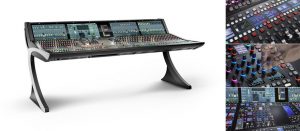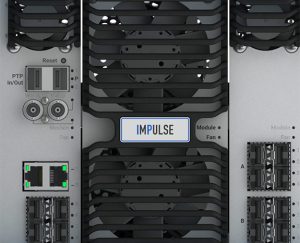Tech Focus: Audio Consoles, Part 1 — An IP Future and a Pandemic Present
‘At-home/at-home’ remote operations are driven by economics and epidemics
Story Highlights
There have been two distinct trends in audio-console development over the past couple of years: a migration to IP-based connectivity and a move to remote access of a console core via a separate device, either wirelessly nearby or over a network across distances. Both were well on their way to widespread and routine adoption; in fact, use of iPads and other wireless touchscreens as extensions of hardware mixers in the live-sound console market has been a reality for much of that time.
However, when the COVID-19 crisis hit sports broadcasters like a ton of bricks in March, with the cancellation of MLB, NBA, NHL, NCAA, and other televised events, it sparked an acceleration of both of those now-intertwined trends. Broadcasters had already realized the economic benefit of the shift to REMI/at-home production techniques, deploying fewer personnel and technical assets onsite at games and keeping such processes as audio mixing and video switching at the main plant studio, something that IP connectivity enhanced. And, suddenly, at-home mixing had become “at-home/at-home” mixing: the A1s found themselves literally mixing shows from spare bedrooms and basements as they sheltered from the COVID-19 virus.
Many of these new tools were already in place but were often still in early stages, and some were cobbled together nearly on the fly as broadcasters coped with the stuttering return of live sports.
“COVID-19 came on suddenly, and everyone went into panic mode at once, needing to do all of their broadcasts remotely,” says Chris Fichera, VP, audio, Group One, which manages distribution and marketing of DiGiCo, Calrec, and Solid State Logic consoles in the U.S. for UK-based Audiotonix. “[Not every console could] do that at the level that broadcast sports needed. The solutions being offered were uneven across the industry.”
IP Connectivity Sets the Stage for Solutions
Fortunately, the ongoing migration to IP connectivity and the demand by broadcasters for more cost-effective remote production paved the way for some solutions .
For instance, Lawo’s Power Core RP, introduced just a year earlier, offered 64 fully featured processing channels, via DSP, to provide low-latency onsite monitoring and IFB mixing within a WAN-capable IP node. It can serve as an extension of Lawo’s mc² series mainframe consoles at a broadcast network’s plant studios, mirroring fader moves but also encompassing such processing as EQ and dynamics. Control is via a touchscreen GUI based on the Lawo VisTool screen design, which allows monitoring of the control connection to the host console, on-air status, and synchronization.
Lawo’s Mix Kitchen was introduced in June and allows off-the-shelf components, such as small USB fader panels or DAW controllers, to be used in any environment — an A1’s home, for example — to connect to a plant’s mc2-series consoles; it also allows surface-less operations based on the mc2 micro-core. In addition to remote mixer operation, the solution enables in-place access to any Mac- or Windows-based computer in the plant.
“You don’t need to invest in a separate control surface,” explains Lawo Sales Engineer Frank Mosch, noting that at least one major U.S. network is evaluating the concept.
Calrec first fielded its Assist solution, a browser-based interface application that creates a virtual-console environment, in April 2019. It had grown out of the company’s VP2 “headless” virtualized-console work surface that mimics the operations and capabilities of its flagship Artemis and Apollo consoles. A version is now available also for the RP1 compact desk and Type R radio production console.
“VP2 becomes Calrec Assist once it’s integrated into an Artemis and Apollo console,” says Calrec National Technical Sales Rep Rob Lewis, underscoring how the marketing terminology of these new solutions has been ruffled by the urgency of the pandemic. “Under these conditions, these solutions had to be fast-tracked.”
What both Calrec and Lawo emphasize is that their remote-access solutions are comprehensive when it comes to encompassing all the features on their main consoles, from fader operation to busses, EQ, dynamics, and other processing.
IP Is OK
At the same time, console makers are stressing the continued transition to an IP infrastructure. For instance, Calrec’s IP-based ImPulse core offers a native IP AES67- and SMPTE 2110-compliant backbone, is fully NMOS-compliant, and is compatible with existing Apollo and Artemis control surfaces. The company has also developed a suite of products aimed at helping broadcasters make that transition: the H2-IP Gateway and an AoIP modular I/O controller card combine to provide an interface between Calrec Hydra2 networks and an AoIP network and provide control capability to allow control data and audio labels to be passed in both directions on a network.
All Lawo mc² series mixing consoles are optimized for an IP production environment. The PowerCore RP remote-production solution for mc² audio consoles integrates modular I/O, DSP, and IP streaming capabilities; the smaller PowerCore Gateway is an adaptable IP I/O node, a modular audio stagebox for meeting all I/O requirements. The A__UHD Core ultra-high-density IP DSP engine for mc² consoles uses the IP network as an extension of the console core’s backplane.
The remote-access solutions coming to market now represent a trend that began under less challenging conditions, but many are expected to remain even as the pandemic eases.
“The staffing-costs issues that broadcasters have been trying to get better control of for a while will still be there,” notes Fichera. “Then there’s the travel restriction that the networks have put in place, which means more mixers will have to work from home. And wait till the [television] rights for the biggest sports come up for bidding again: that will really drive the need to cut production costs further. It’s still economics that are driving this, long-term. The pandemic is just accelerating it.”
Click here for Tech Focus: Audio Consoles, Part 2 — Remote Products Wrap-Up.


